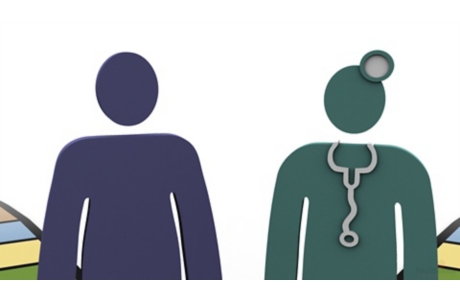Blood Pressure Screening
Topic Overview
The U.S. Preventive Services Task Force (USPSTF) recommends screening for adults 18 and older for high blood pressure.footnote 1
Tests and programs for high blood pressure vary widely in reliability. Results from automated blood pressure testing, such as you might do at a grocery store or pharmacy, may not be accurate. Any high blood pressure measurement discovered during a blood pressure screening program needs to be confirmed by a doctor or another health professional.
Rechecking blood pressure
Your doctor can let you know how often you should get your blood pressure checked. It may depend on what your blood pressure is and your risk for heart disease. You can get your blood pressure checked during any routine medical visit.
The USPSTF makes these recommendations about how often to check your blood pressure:footnote 1
- Get your blood pressure checked every year if any one of the following is true:
- You’re age 40 or older.
- You’re African-American.
- You’re overweight or obese.
- The top number of your blood pressure is 130 to 139, or the bottom number is 85 to 89, or both.
- You can get your blood pressure checked every 3 to 5 years if all of the following are true:
- You’re age 18 to 39.
- And the top number of your blood pressure is lower than 130, and the bottom number is lower than 85.
- And you’re not African-American, overweight, or obese.
For more information, see the topics High Blood Pressure and Home Blood Pressure Test.
Making sure that blood pressure is actually high
After measuring your blood pressure, your doctor may ask you to test it again when you are home.footnote 1, footnote 2 This is because your blood pressure can change throughout the day. And sometimes blood pressure is high only because you are seeing a doctor. This is called white-coat hypertension. To diagnose high blood pressure, your doctor needs to know if your blood pressure is high throughout the day.
So your doctor may ask you to monitor your blood pressure at home to make sure that it actually is high. You may get an ambulatory blood pressure monitor or a home blood pressure monitor. These devices measure your blood pressure several times throughout the day.
Screening in children and teens
Children and teens typically have their blood pressure checked during routine well-child visits and checkups. Blood pressure checks typically start after age 3. After age 18, men and women can follow the adult screening guidelines.footnote 1, footnote 3
References
Citations
- U.S. Preventive Services Task Force (2015). Hypertension in adults: Screening and home monitoring: Final recommendation statement. http://www.uspreventiveservicestaskforce.org/Page/Document/RecommendationStatementFinal/high-blood-pressure-in-adults-screening. Accessed January 21 , 2016.
- Whelton PK, et al. (2017). Guideline for the prevention, detection, evaluation, and management of high blood pressure in adults: A report of the American College of Cardiology/American Heart Association Task Force on Clinical Practice Guidelines. Journal of the American College of Cardiology, published online November 13, 2017. DOI: 10.1016/j.jacc.2017.11.006. Accessed November 20, 2017.
- Flynn JT, et al. (2017). Clinical practice guideline for screening and management of high blood pressure in children and adolescents. Pediatrics, 140(3): e20171904. DOI: 10.1542/peds.2017-1904. Accessed August 31, 2018.
Other Works Consulted
- U.S. Preventive Services Task Force (2013). Screening for primary hypertension in children and adolescents. http://www.uspreventiveservicestaskforce.org/uspstf/uspshypechld.htm. Accessed January 11, 2014.
- Weber MA, et al. (2013). Clinical practice guidelines for the management of hypertension in the community. Journal of Clinical Hypertension. DOI: 10.1111/jch.12237. Accessed December 19, 2013.
Current as of: April 9, 2019
Author: Healthwise Staff
Medical Review:E. Gregory Thompson MD – Internal Medicine & Martin J. Gabica MD – Family Medicine & Adam Husney MD – Family Medicine & Adam Husney MD – Family Medicine
This information does not replace the advice of a doctor. Healthwise, Incorporated, disclaims any warranty or liability for your use of this information. Your use of this information means that you agree to the Terms of Use. Learn how we develop our content.


